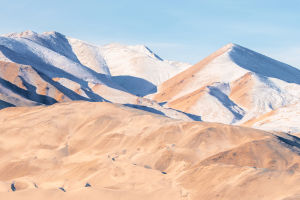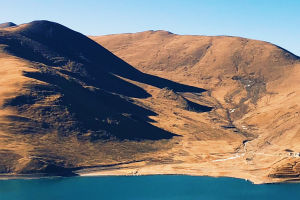Hvítserkur, also known as Rhinoceros Rock, Elephant Trunk Rock, or Gargoyle Rock, is a 15-meter-high basaltic rock situated in Hoonah Bay on the east coast of the Vatnsnes Peninsula in northwestern Iceland.
The rock has two holes at the bottom and changes shape as the tide rises and falls. The Icelandic name Hvítserkur means "white shirt" and refers to the white excrement of birds covering the surface of the dark rock.
After witnessing the strange landscapes of Iceland, you may still be drawn to the mysterious aura of Hvítserkur. According to scientists, the basalt boulder is a remnant of an ancient volcanic eruption.
Over time, the rock formations scattered on the seashore near the black sand beach have been eroded by the sea and tides, forming two caves of different sizes at the foot of the cliff. Although the caves have lost their original appearance, they have become a unique natural creation.
According to Icelandic landforms and elven legends, Hvítserkur has become a topic of discussion for the locals after dinner. As the legend goes, a troll living in Strandir once attempted to eliminate the bells at night but was captured by daylight and petrified.
Hvítserkur is a treasure trove of rare animals and a popular attraction for tourists. In addition to birds such as gulls and Arctic terns, cute creatures like ducks and foxes also call this place home.
While small animals can get close to Hvítserkur, visitors are limited to standing on the coastal cliffs or on a small observation deck during high tide. The best time to view Hvítserkur is during sunset and low tide when visitors can walk right up to the foot of the cliffs.
The temperature at this location remains relatively stable throughout the year, with the warmest month being July and the coldest being March. May is the sunniest, while December is the wettest. Visitors can also wear rubber shoes and pick up pretty shells and rocks in the water.
Hvítserkur looks different depending on the time of day and angle. At midnight during the middle of summer, the rocks are illuminated by the sun's rays, making them look like trolls with real-life force and painting mysterious and profound colors on the gloomy sky.
Moreover, Oscar Beach is the best place to see the Northern Lights, which dance gloriously in the long sky from mid-September to mid-April.
Apart from Hvítserkur, visitors can also enjoy the view of the island on the way to the beach, walk on the endless shallows and watch the tides fade, or see the ringed seals sunbathing on the rocky beach. Oscar Beach is one of the largest colonies of ringed seals in Iceland, making the seals the local stars of the area.
The Vatnsnes peninsula has few local inhabitants, with only about 50,000 people according to statistics. The nearby countryside mainly relies on agriculture, industry, trade, and fishing to sustain their livelihoods.
The quiet and leisurely coast, the breeze blowing the lush and spontaneous grass on a sunny day, and the vitality of everything that can withstand the years are the only secrets of nature here.


